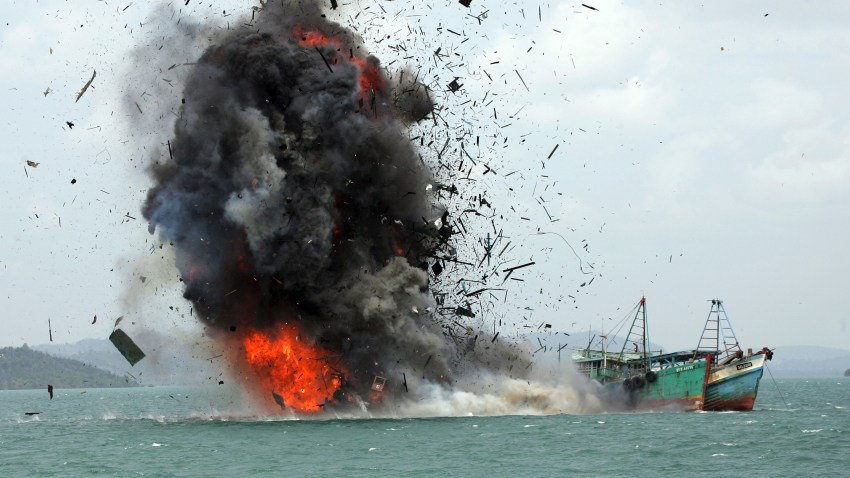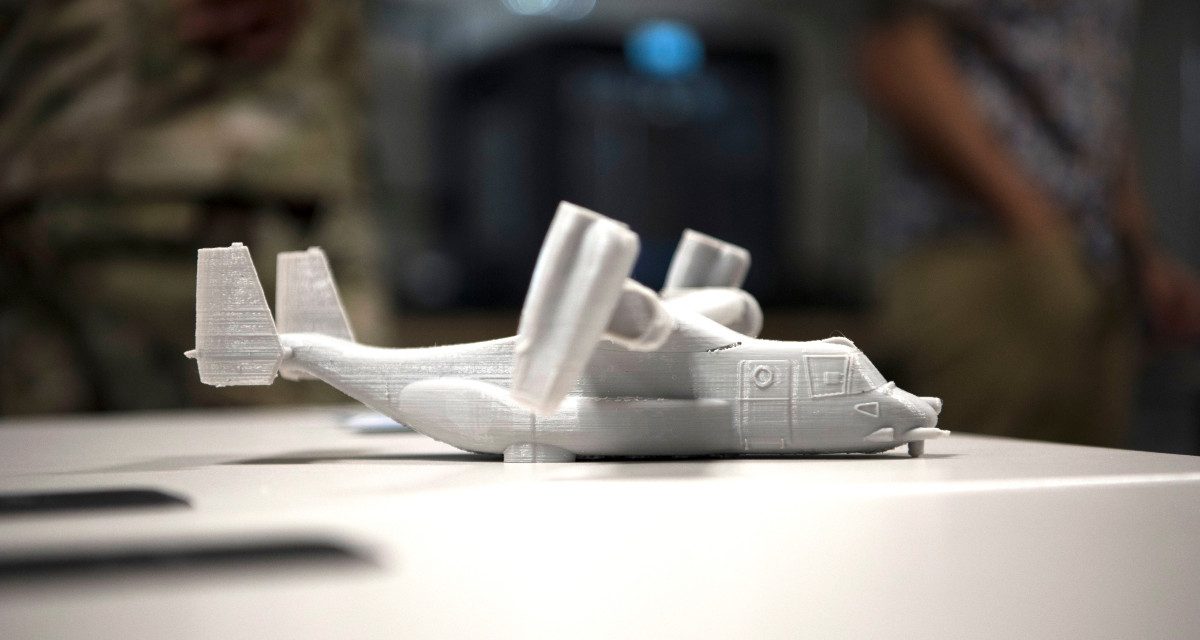Darrell M. West
EXECUTIVE SUMMARY
It used to be a simple matter to outsource production to other countries, have them manufacture clothes, electronics, computer chips, and medicines, and ship the items back to the United States. America provided value through design capabilities and reliance upon domestically-produced components. But many businesses utilized inexpensive labor from abroad to assemble products, and global distributors then would deliver materials “just-in-time” for American firms.[1]
Now we are seeing the limits of this model. It is a time of tremendous disruptions in global supply chains with many problems ranging from shifts in consumer demand and off-shoring reliability to transportation jams, anti-competitive practices, and geopolitical complications.[2] As noted in a 2022 Council of Economic Advisers report, supply chains currently “are efficient but brittle – vulnerable to breaking down in the face of a pandemic, a war or a natural disaster. Because of outsourcing, off-shoring and insufficient investment in resilience, many supply chains have become complex and fragile.”[3]
In this paper, I outline six ways to improve global supply chains:Boosting domestic production through on-shoring and near-shoring
Easing transportation jams
Prioritizing public health
Managing labor shortages
Fighting anti-competitive practices
Mitigating geopolitical tensions
Making progress in these areas would go a long way towards easing current global supply chain disruptions and putting global trade back on a firmer footing.
BOOSTING DOMESTIC CAPABILITIES THROUGH ON-SHORING AND NEAR-SHORING
Years ago, many companies adopted a “just-in-time” approach to supplies in which they stocked only what they immediately needed and trusted supply chains to deliver other items quickly. That approach saved money because firms did not need to build extended storage facilities or keep a full inventory. Rather, they kept their stocks low and refreshed on an “as needed” basis.[4]
At the same time, much of the country’s manufacturing capacity shifted abroad as corporate leaders sought low labor and energy cost areas where products could be made inexpensively.[5] While American manufacturing’s share of overall output remained constant, its labor share declined as firms automated production lines and relied upon emerging technologies.[6] That production and distribution system worked as planned until difficulties in the global supply chain disrupted those practices and created problems in terms of supplies, safety, and security. Concerns unleashed by the pandemic and dependence on foreign manufacturers combined to increase risks and raise worries regarding just-in-time practices.[7]
The disruptions caused by these alterations have led to calls for a greater domestic manufacturing capability through on-shoring or near-shoring. On-shoring refers to bringing production back to the United States where it is safe from foreign adversaries and subject to domestic health and safety provisions. Near-shoring is bringing production back to friendly countries not far from the United States so that production does not have long transportation times or suffer from security or safety problems. Such a stance would rely more substantially on places such as Canada and Mexico, where the supply lines would be shorter and the politics usually more dependable.
Some governments are providing incentives to launch or return production to their homelands. Singapore, for example, has announced a Together Enhancing Enterprise Resilience Programme that offers money to upgrade business operations and capacity. Italy has developed programs to restore the production of luxury goods in jewelry, fashion, and textiles. Japan has established a fund “to finance 70% of the relocation costs for small and medium enterprises producing PPE and raw materials for drugs.”[8]
In a number of cases, these incentives are firm-specific and provide funds to individual companies that agree to bring back manufacturing operations to their native lands. At other times, the programs are industry-wide and provide tax incentives and/or infrastructure investment that makes it possible for a variety of firms to reshore their operations.
However, a European Parliament report found modest benefits to reshoring in the United Kingdom, United States, and Japan, and argued that “reshoring should be primarily focused on specific critical sectors and products with pronounced supply bottlenecks.”[9] Rather than an across-the-board solution, its authors advocated targeted reshoring because host countries often did not have the production facilities and/or workforce required for wholesale reshoring.
A 2021 World Bank analysis went even further in warning against widespread reshoring. In the report, experts stated, “It is, however, premature to conclude that firms should or will shift gears from ‘just-in-time’ GVCs (Global Value Chains) to ‘just-in-case’ GVCs. Shorter GVCs and localized production are not necessarily less vulnerable to shocks. Supplier diversification and relocation can be costly and impractical for highly complex products. And holding more inventory and building redundant capacity could create inefficiencies in many industries.”[10]
EASING TRANSPORTATION JAMS
Transportation logjams have complicated distribution logistics in recent years. There have been many reports of port holdups, container box shortages, and price increases in key areas. Delivery delays snarl product contracts and make it difficult for companies to have the components necessary to assemble products.[11] Some customers have complained that their shipping cost of $4,000 per container has risen four-to-five times to $15,000-to-$22,000 per container. And even when they have contracts guaranteeing a minimum number of containers, shippers no longer honor those written commitments.[12]
A report from the United Nations Conference on Trade and Development highlighted a number of factors as being responsible for shipping woes. There was a major obstruction in the Suez Canal when a large shipping vessel got wedged sideways in the canal and blocked traffic for several weeks. There also has been a shortage of container boxes that transport many goods through major ports, COVID-19 delays linked to workforce health, and difficulties in managing production capacity when consumer demand surges in durable goods.[13]
The result of these problems is a dramatic increase in container freight rates that raises the costs of items manufactured abroad. As opposed to being an inexpensive way to supply goods and services, off-shoring rose in costs, complicating the ability of businesses to meet the needs of their customers. Orders sometimes took months to fill, which was frustrating for people used to fast turnaround times.
For these reasons, experts have called for digital tracking that eases logistical delays. In the UN report, for example, writers noted that “The recent shortage in containers and maritime equipment took stakeholders by surprise. Monitoring of port calls and liner schedules, along with better tracing and port call optimization, are among the issues covered by the growing field of maritime informatics.”[14]
Improved tracking and tracing would help identify logjams and allow firms to take action that eases delivery problems. Right now, it is not always easy to keep track of the hundreds of thousands of shipping containers that traverse the world. Using technology to monitor movements and anticipate logjams would go a long way to addressing logistical problems and easing transportation logjams.[15]
PRIORITIZING PUBLIC HEALTH
The past two years have been a time of tremendous stress due to the COVID-19 pandemic and product shortages in key areas. The surge in ecommerce and consumer demand and public health challenges during the pandemic put pressure on manufacturing and distribution facilities around the world. With much of the developed world having shifted to off-shore manufacturing and just-in-time supply chains, it did not take long after COVID-19 appeared for global supply chains to become overstretched and frayed.
Businesses that had gotten used to manufacturing key products in the developing world and having quick turnaround to global markets discovered that pandemics wreak havoc on component supplies, manufacturing, distribution, public health, and the workforce. Products that might be available in a matter of days shifted to schedules that took weeks or months. There was no easy way to address supply chain issues when manufacturers had product shortages and sick workers.
Research has found that consumer demand rose in some areas such as face masks, medical supplies, and pharmaceuticals and quickly outpaced the ability of manufacturers to keep up with the desire for these products. The pandemic shifted consumer demand and market trends and disrupted established business practices. It limited demand in sectors requiring in-person interactions while increasing it in others that were able to supply goods and services through digital platforms.[16]
Some sectors experienced shortages in key components that made it difficult to produce needed products. This included areas such as personal protective equipment, medical supplies, pharmaceuticals, and electric vehicle batteries, among others. Not having access to all the critical ingredients or active drug compounds made it impossible to manufacture certain items and limited the ability of businesses to satisfy consumer demand.
To mitigate these problems, it is important to take steps that improve the public health infrastructure. It will be difficult to resolve supply chain disruptions as long as major public health challenges roil the workforce. A March 2021 McKinsey report argued economic recovery is “highly dependent on how quickly health risks recede with vaccinations and whether governments provide further economic support.”[17] There is a close interplay between health and economic productivity so making sure we have effective health infrastructure and treatments is vital to dealing with the negative consequences of pandemics on global supply chains.
One should not expect COVID-19 to be the last pandemic the world faces. With the interconnectedness of global life and international travel and commerce, businesses should plan on periodic epidemics and pandemics and have public health systems that are prepared to deal with major outbreaks. Contagious diseases are quite common, and the world needs to invest in infrastructure, contact tracing, and treatment to guard against devastating economic repercussions. Otherwise, many places will be caught off guard and suffer debilitating health and business fallout.[18]
DEALING WITH LABOR SHORTAGES
In recent years, labor shortages and economic shocks have roiled supply chains and generated delays, cost increases, and a range of logistical challenges. As a result, inflation has returned as an economic problem, and there are complications linked to underlying shifts in the workforce.
A changing demography is part of the problem. As documented by the Federal Reserve Bank of Boston, the population is aging and so is the workforce. Overall participation in the workforce declined during the pandemic and has not recovered to its pre-COVID-19 levels. Despite a low national unemployment rate, a number of people remain outside the workforce, and this is especially the case with women who are taking care of children and elderly parents.[19]
As the economy has recovered, there remain labor shortages that make it difficult for businesses to staff their positions and deal with current consumer demand. In a 2021 Society for Human Resources Managers survey, 90 percent of firms reported difficulty in filling particular positions. This was especially true for manufacturing, hospitality, and healthcare sectors. COVID-19 generated worries about public health, and it was difficult for businesses to find workers for their open jobs.[20]
The pandemic clearly has complicated the labor situation. A Brookings report by Katie Bach found that 30 million Americans suffered from “long COVID” and that 15 percent of the unfilled jobs were due to people suffering from that malady. She argues it is time for the Census Bureau to add COVID-19 questions to its workforce analysis so there could be a better understanding of the interplay of health and workforce issues.[21]
The unanswered question right now is how many of these pandemic issues will be short-term or will remain part of workforce issues going forward. The country is grappling with a number of workforce shifts such as rising automation, digital transformation of many sectors, and a future of work characterized by AI, machine learning, and data analytics.22 Each one of these developments complicates supply chain challenges but taken together generate considerable uncertainties regarding the path ahead.
A McKinsey report recommends that public and private sector leaders invest in digital infrastructure to make it easier for workers to access broadband, perform their tasks, operate remotely, and deal with pandemics, automation, and demographic shifts. Worker retraining will be required for those at risk of falling behind and making sure employers have the employees needed to manufacture, distribute, and sell durable goods.[23]
FIGHTING ANTI-COMPETITIVE PRACTICES
Limited market competition fuels supply chain problems by making it difficult to prevent abusive market practices. In several areas, large firms have significant market power and sometimes use their control to raise prices and engage in anti-competitive practices. That accentuates market problems and aggravates supply chain problems.
One recent example of market oligopolies is the baby formula sector. There, four firms generate “90% of the US supply of formula.” When one firm encountered infections at a plant and the Food and Drug Administration closed that facility, there was a production shortfall and “panic buying” in the United States.[24] Combined with restrictions on the import of formulas produced abroad, shortages skyrocketed and persisted for months.
In this situation, there needs to be vigorous anti-trust enforcement designed to limit market dysfunctions and competitive abuses. In its United Nations report, experts argue, “…it is also important to ensure that national competition authorities can monitor freight rates and market behavior. UNCTAD is contributing to such monitoring through its research and statistics on fleet deployment, port calls, freight rates and liner shipping connectivity. It remains important for policymakers to continue to strengthen national competition authorities in the area of maritime transport and ensure that they are prepared to provide the requisite regulatory oversight.”[25]
In the United States, the Jones Act for many years has limited American shipping to U.S.-owned boats. Although this requirement originally had the intention of boosting the domestic shipping industry, the legislation keeps shipping costs high while not always offering the protections that members of Congress sought. It artificially boosts costs and imposes bureaucratic barriers on domestic shippers without being very successful at aiding American firms. It may be time to revisit that legislation by lifting some of its provisions and consider ways to lower costs and improve supply logistics.[26]
MITIGATING GEOPOLITICAL COMPLICATIONS
The geopolitical situation has grown more complex as Russia invaded Ukraine, relations between the U.S. and China have become more combative, and various countries have imposed tariffs, sanctions, and barriers to entry on other nations. With many goods, from electronics and medical equipment to clothes and furniture, being made in China, it is difficult to maintain open supply chains as long as geopolitical conflict intensifies and economic and security risks are high.
Tensions escalated during the Donald Trump administration when he slapped tariffs on $350 billion of Chinese imports in response to a large trade gap and security concerns. In response, the Chinese added tariffs on $100 billion of American exports. According to Professors Pablo Fajgelbaum and Amit Khandelwal, this trade war raises costs to consumers and reduces aggregate economic growth.[27]
COVID-19 did not help, as it revealed a dependence on Chinese manufacturers for personal protective equipment, pharmaceuticals, and electronic devices that endangered public health and security. A report from the Congressional Research Service found that the pandemic led to shortages of medical equipment and drug supplies in the United States. These shortages became particularly acute in 2020 when China nationalized its authority over medical supplies and prioritized deliveries within its own nation and to other friendly countries. That intensified a lack of supply in the United States just when people were suffering the most.[28]
Due to the risks of Chinese and Indian suppliers, some experts have called for a decoupling of America from foreign supply chains in critical areas.[29] The argument is the U.S. should enhance its own domestic capabilities and wean itself from a dependence on China in key sectors. While that advice is well-taken in certain critical areas, it would take years in other sectors to implement such a strategy and build domestic capabilities within the United States.
One stark example of the complex geopolitics impinging on supply chains is the semiconductor industry, where a shortage of computer chips harmed the ability of car manufacturers to produce cars and trucks and many other areas to manufacturing consumer devices, durable goods, and mobile phones. As the economy digitizes, a wide variety of products require computer chips, and production in some areas ground to a near standstill as chip shortages developed. According to Kleinhans and Hess, chip shortages emerged based on “high market entry barriers, high geographic concentration, high fab utilization and long manufacturing cycles.”[30]
In that area, the difficulties of decoupling are readily apparent because it can take up to a decade to build advanced fab production facilities and cost tens of billions of dollars. For that reason, decoupling is not a viable strategy for the immediate future. Even if implemented in certain sectors, production likely would just move from China to other parts of Asia. That would keep supply lines long and subject to regional politics and rivalries.
Rather than outright decoupling, Saif Khan of the Georgetown University Center for Security and Emerging Technology argues the U.S. needs to take a variety of steps to improve its chip manufacturing capabilities and impose limits on China’s chip fab buildup, slow its chip design capabilities, and control access to advanced computer chips. Taking these steps would limit the development of China’s domestic semiconductor industry while still assuring U.S. access to vital chips.[31]
Thinking more broadly, it is hard to imagine supply chain progress outside of a more stable geopolitical relationship between the U.S. and China. Manufacturing and distribution do not take place in a vacuum but rather depend on negotiated agreements, common frames of references, and processes for managing conflict points. A Brookings Institution report by John Allen, Ryan Hass, and Bruce Jones argues for “a concept of persistent competition leavened with calibrated cooperation [that] holds the greatest promise of sustaining support at home and with allies and partners.”[32]
Specifically, they call for strategic competition, avoiding unrealistic expectations, making investments in crisis management, avoiding war, negotiating arms control agreements, and engaging in efforts that “inoculate critical global systems from debilitating U.S.-China competition.” They see climate change, pandemic control, and financial stability as areas of possible agreement. By building partnerships, engaging in diplomacy, and having realistic expectations about what is possible, they believe the two countries can maintain a fruitful relationship that can stabilize global trade, manufacturing, and distribution.
A MULTIFACETED PROBLEM
To summarize, the challenge of improving global supply chains is their multifaceted nature. There is not a single cause, which, if corrected, would address the situation but a series of difficult problems that interact in complex ways. For example, labor shortages linked to economic shocks and a continuing pandemic weaken production capabilities and impede resolution. A Washington Post story made that clear connection when it documented how “COVID shutdowns in China are delaying medical scans in the U.S.”[33] The reason is simple. When COVID-19 numbers increase, China closes factories that make medical equipment destined for America and therefore exacerbates supply chain obstacles.
The same logic applies throughout supply lines and illustrates why it is so challenging to address these matters. Resolution is going to require progress on many different fronts. There will need to be improvements on a variety of factors to make a difference in production, logistics, and distribution. Progress will not be easy or quick but can be made if there is a clear and comprehensive strategy to deal with the multiple challenges and complex interconnections.











